Top of the pageActionset
Breathing Problems: Using a Metered-Dose Inhaler
A metered-dose inhaler lets you breathe medicine into your lungs quickly. Inhaled medicine works faster than the same medicine in a pill. An inhaler allows you to take less medicine than you would need if you took it as a pill.
"Metered-dose" means that the inhaler gives a measured amount of medicine each time you use it. A metered-dose inhaler gives medicine in the form of a liquid mist.
Your doctor may want you to use a spacer with your inhaler. A spacer is a chamber that you attach to the inhaler. The chamber holds the medicine before you inhale it. That way, you can inhale the medicine in as many breaths as you need. Doctors recommend using a spacer with most metered-dose inhalers. This is even more important when using corticosteroid medicines.
How to use the inhaler
Getting started
To get started:
- Talk with your doctor to be sure you are using your inhaler the right way. It might help if you practice using it in front of a mirror. Use the inhaler exactly as instructed.
- Check that you have the correct medicine. If you use more than one inhaler, put a label on each one. This will let you know which one to use at the right time.
- Keep track of how much medicine is in the inhaler. Check the label to see how many doses are in the container. If you know how many puffs you can take, you can replace the inhaler before you run out. Ask your doctor or pharmacist how you can keep track of how much medicine is left.
- Talk to your doctor about using a spacer with your inhaler. Spacers make it easier to get the medicine into your lungs. You may need a spacer if you are using corticosteroid medicines. A spacer can also help if you have problems pressing the inhaler and breathing in at the same time.
- If you are using a corticosteroid inhaler, rinse out your mouth with water after use. Do not swallow the water. Swallowing the water will increase the chance that the medicine will get into your bloodstream. This may make it more likely that you will have side effects.
Using the inhaler with a spacer
Follow these steps for using a metered-dose inhaler with a spacer.
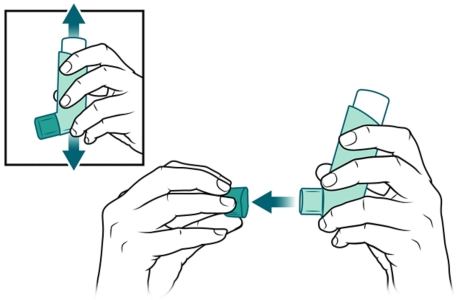
1. Shake the inhaler for 5 seconds. Remove the cap.

2. Hold the inhaler upright with the mouthpiece at the bottom. Then place the mouthpiece of the inhaler into the spacer.
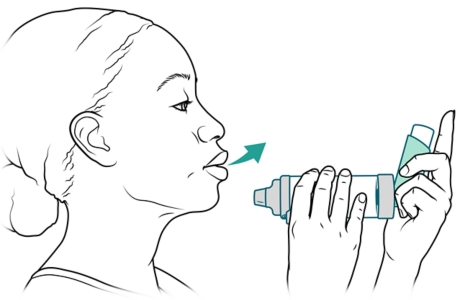
3. Stand or sit up straight. With the spacer a short distance from your mouth, breathe out slowly and completely.

4. Place the spacer's mouthpiece in your mouth. Close your lips tightly around the mouthpiece and keep your tongue away from the opening.
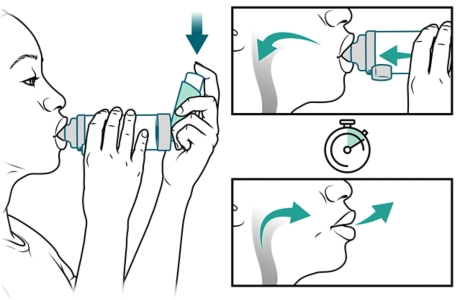
5. Press down on the inhaler to spray 1 puff of medicine into the spacer. Then start breathing in slowly and deeply. Hold your breath for 5 to 10 seconds. Remove the spacer's mouthpiece from your mouth. Then breathe out slowly.

6. If you need another puff of medicine, wait 1 minute between puffs.

7. Remove the inhaler from the spacer, and replace their caps.
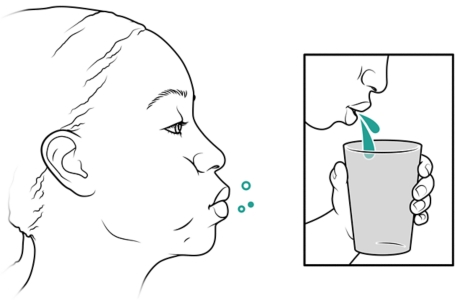
8. Rinse your mouth with water if the inhaler has corticosteroids. (Controller inhalers usually have corticosteroids.) Do not swallow the water.
Using the inhaler without a spacer
Follow these steps for using a metered-dose inhaler without a spacer.

1. Shake the inhaler for 5 seconds. Remove the cap.
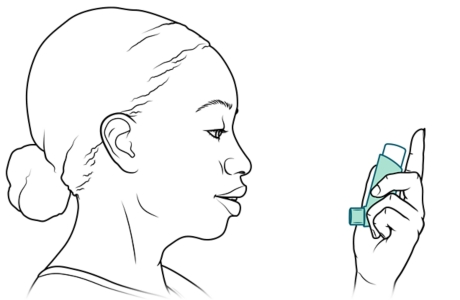
2. Hold the inhaler upright with the mouthpiece at the bottom.

3. Stand or sit up straight. Breathe out slowly and completely.
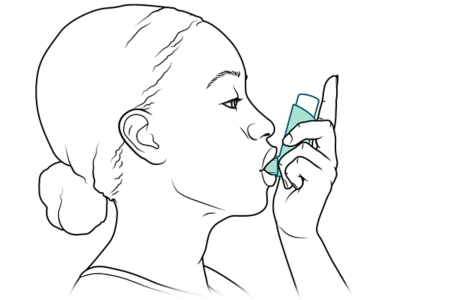
4. Put the inhaler's mouthpiece in your mouth, and close your lips tightly around it. Keep your tongue away from the opening.
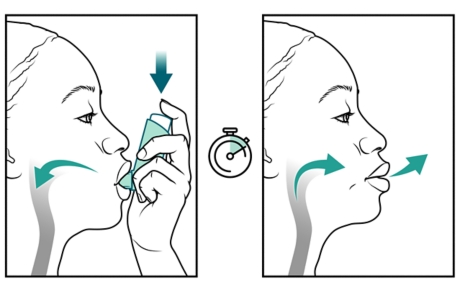
5. Take one slow, deep breath while pressing the canister 1 time to release a puff of medicine. Hold your breath for 5 to 10 seconds.

6. If you need another puff of medicine, wait 1 minute between puffs.
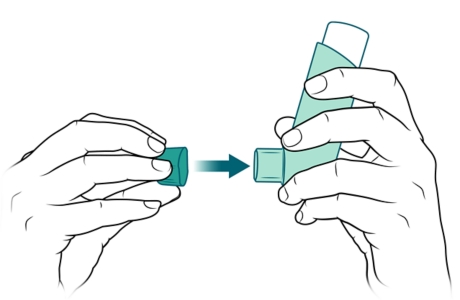
7. Replace the cap on the inhaler.

8. Rinse your mouth with water if the inhaler has corticosteroids. Do not swallow the water.
Current as of: September 29, 2025
Author: Ignite Healthwise, LLC Staff
Clinical Review Board
All Ignite Healthwise, LLC education is reviewed by a team that includes physicians, nurses, advanced practitioners, registered dieticians, and other healthcare professionals.



